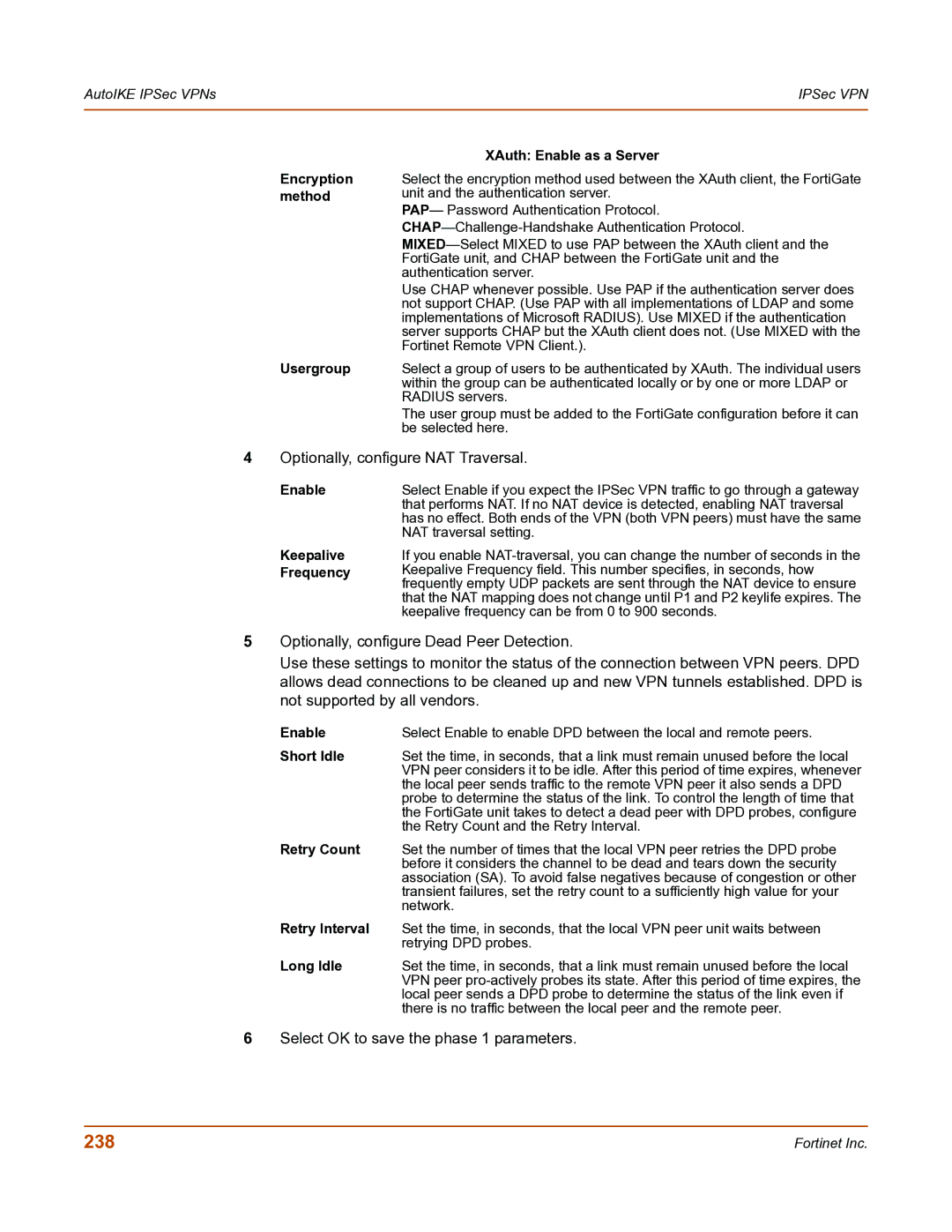AutoIKE IPSec VPNs | IPSec VPN |
|
|
| XAuth: Enable as a Server |
Encryption | Select the encryption method used between the XAuth client, the FortiGate |
method | unit and the authentication server. |
| PAP— Password Authentication Protocol. |
| |
| |
| FortiGate unit, and CHAP between the FortiGate unit and the |
| authentication server. |
| Use CHAP whenever possible. Use PAP if the authentication server does |
| not support CHAP. (Use PAP with all implementations of LDAP and some |
| implementations of Microsoft RADIUS). Use MIXED if the authentication |
| server supports CHAP but the XAuth client does not. (Use MIXED with the |
| Fortinet Remote VPN Client.). |
Usergroup | Select a group of users to be authenticated by XAuth. The individual users |
| within the group can be authenticated locally or by one or more LDAP or |
| RADIUS servers. |
| The user group must be added to the FortiGate configuration before it can |
| be selected here. |
4Optionally, configure NAT Traversal.
Enable | Select Enable if you expect the IPSec VPN traffic to go through a gateway |
| that performs NAT. If no NAT device is detected, enabling NAT traversal |
| has no effect. Both ends of the VPN (both VPN peers) must have the same |
| NAT traversal setting. |
Keepalive Frequency
If you enable
5Optionally, configure Dead Peer Detection.
Use these settings to monitor the status of the connection between VPN peers. DPD allows dead connections to be cleaned up and new VPN tunnels established. DPD is not supported by all vendors.
Enable | Select Enable to enable DPD between the local and remote peers. |
Short Idle | Set the time, in seconds, that a link must remain unused before the local |
| VPN peer considers it to be idle. After this period of time expires, whenever |
| the local peer sends traffic to the remote VPN peer it also sends a DPD |
| probe to determine the status of the link. To control the length of time that |
| the FortiGate unit takes to detect a dead peer with DPD probes, configure |
| the Retry Count and the Retry Interval. |
Retry Count | Set the number of times that the local VPN peer retries the DPD probe |
| before it considers the channel to be dead and tears down the security |
| association (SA). To avoid false negatives because of congestion or other |
| transient failures, set the retry count to a sufficiently high value for your |
| network. |
Retry Interval | Set the time, in seconds, that the local VPN peer unit waits between |
| retrying DPD probes. |
Long Idle | Set the time, in seconds, that a link must remain unused before the local |
| VPN peer |
| local peer sends a DPD probe to determine the status of the link even if |
| there is no traffic between the local peer and the remote peer. |
6Select OK to save the phase 1 parameters.
238 | Fortinet Inc. |
